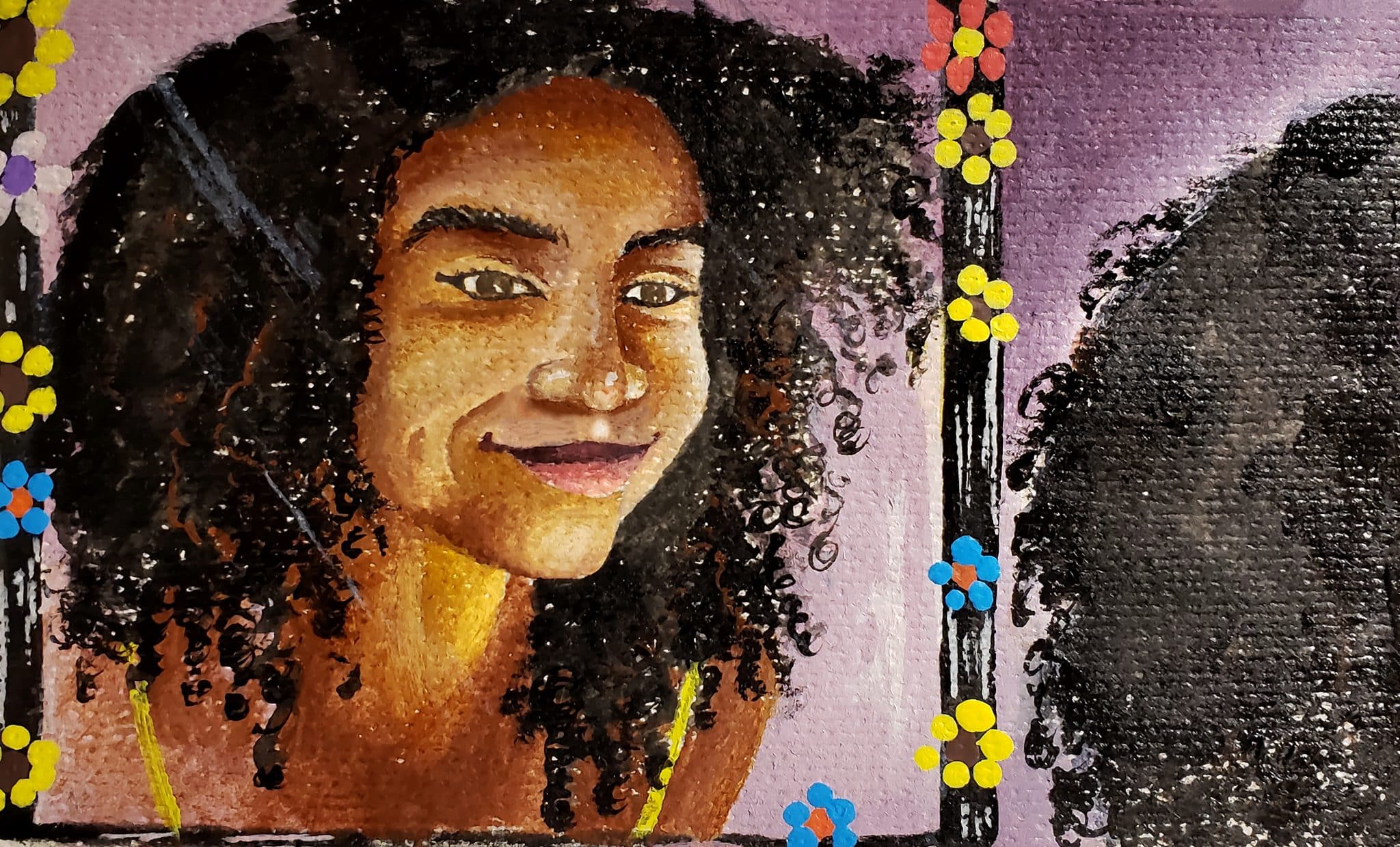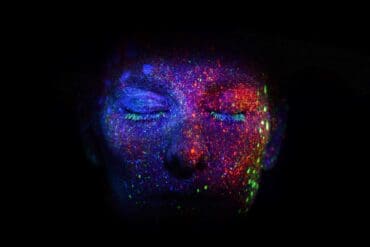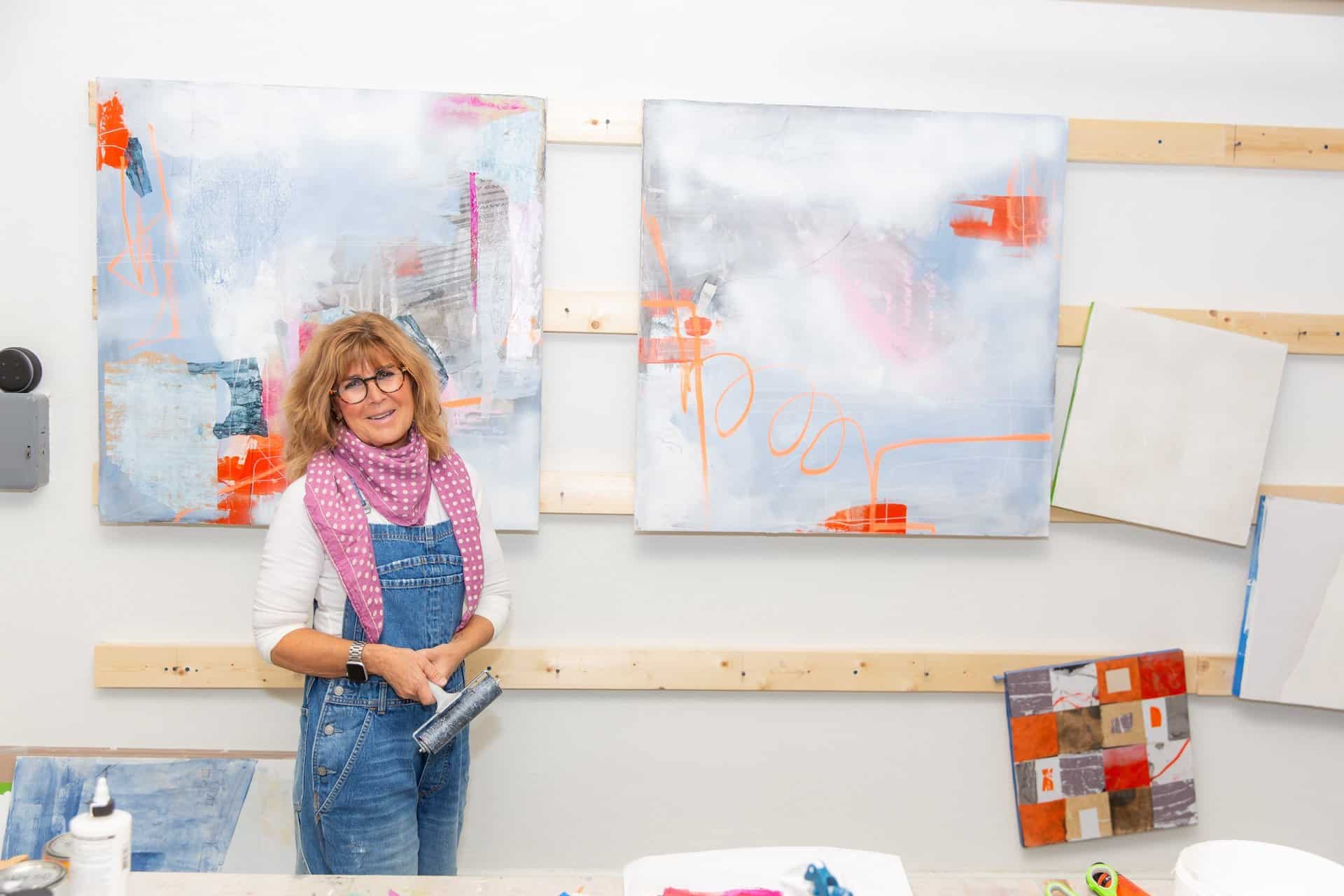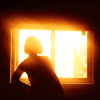In What Ways Do Autoethnography & Painting Go Together?
MARLEN HARRISON: Welcome, everybody, to our second podcast here at The AutoEthnographer. Today we are talking with the award-winning artist, Suzanne Hughes, about autoethnography and painting. Suzanne is responsible for the cover art for our special issue based on climate change (throughout 2022). Suzanne has been painting for only about 2 1/2 years now since the beginning of lockdown in March of 2020. But since then, she has very quickly explored the process of painting and has come to consider that perhaps art can be autoethnographic. Suzanne, welcome.

How Do Painting and Autoethnography Go Together? – The AutoEthnographer Literary and Arts Magazine
SUZANNE HUGHES: Thank you for having me.
MH: Let’s just get right down to it. You are a new painter. This is a new identity and journey for you.
SH: Yes, it is totally new. I started painting about 2 1/2 years ago during lockdown after a friend encouraged me to paint. I never really thought I could do it. I’ve always been good at designing and color perspective. And creating peaceful environments. And during lockdown I lived on my own. I started painting and I just started doing it. I realized that although I could never draw anything or paint, I realized that intrinsically it made me so happy. It made me feel very grounded. It made me feel safe, secure. It made me happy.
MH: I think a lot of people came to creative and expressive arts during the lockdown, as we had perhaps more time on our own. Or perhaps we had a space and a time to start creating in ways that we hadn’t had before. You mentioned a friend of yours had encouraged you at the beginning, and 2 1/2 years is a very short time. I know that last year you won the Artist Network Magazine’s first place award for abstract landscape. I suppose we can start right there. That’s probably the best way to describe the type of art you create – abstract landscape?
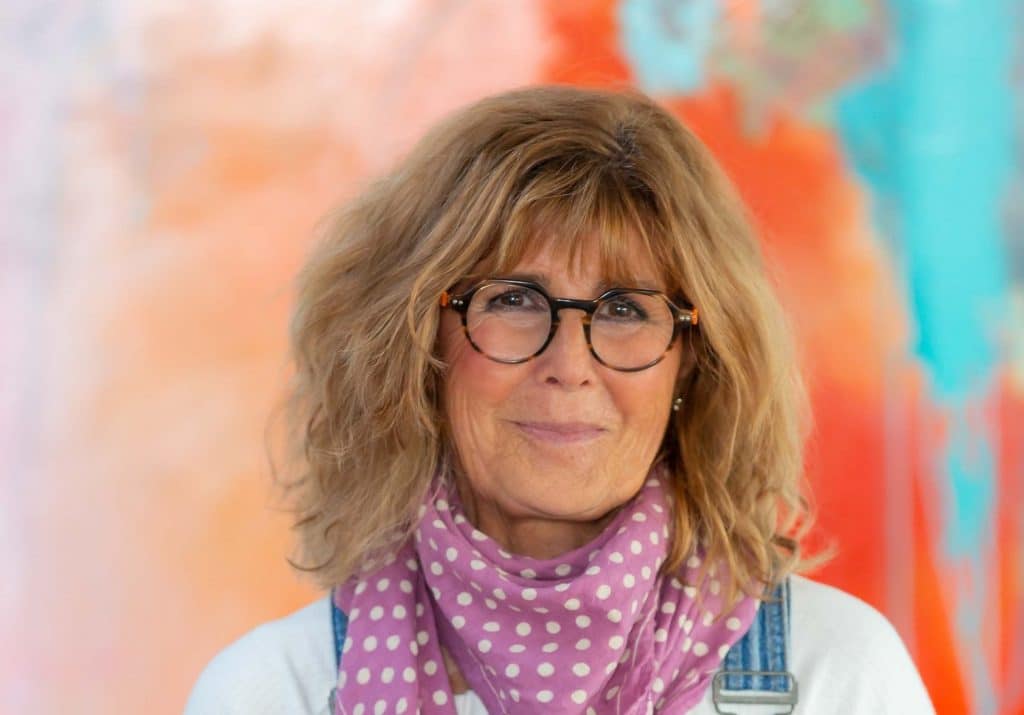
SH: It is. I did not realize at first that abstract landscape was what I was painting. I am very much drawn to solitude. I am very much drawn to open spaces. Um, beaches with nobody on them. You know, really quiet places. I am a quiet person, really. And I am definitely drawn to that, sort of “I would like to be on the top of a mountain. I would like to be on an empty beach.” And I think my art reflects that.
MH: So, both the process of creating your art and the art itself have a meditative quality?
SH: It does, it does. And when I paint, I feel so grounded. I feel so calm. I feel really happy, and I get those emotions when I am in a place that is like that.
MH: Gotcha. So as people are listening, I just want to point out that they can see some of your work by visiting https://SuzanneHughesArt.com. So, as you are listening, feel free to go on over to Suzanne’s website and you can peek at the kind of work she does.
What really interests me about Suzanne is her process. Plus, there is more to her work than meets the eye. I am fortunate in that I have known Suzanne for a few years, and I have learned about her process, and that is how we came to adopt some of Suzanne’s art for the cover for our special issue.
Now, I know all artists have processes, whether we are writers, painters, chefs, whatever our art is. It is a dynamic process. We change, we grow, we discover. But what I find so fascinating about you, Suzanne, and kind of linking to what I’m about to explain about this question of “Is art autoethnographic?” is that your canvas undergoes several transitions so that at any point in the development of one of your paintings, the canvas can look completely unlike what we would see as the final product. And yeah, I’ve always maintained it is fascinating to think about how who you are from day-to-day, from week to week, in crafting these canvases, as your vision evolves, as your relationship evolves with the canvas, and you begin to learn more perhaps about what it is, it just keeps changing and developing. So let me just put that question to you. Is your painting autoethnographic?
SH: Yes, it is. And I never really realized that it was; I just painted. I couldn’t understand my painting. I am good with colors. Most of my work starts with really vibrant colors and words underneath. But as the work evolves, it becomes more and more toned down. It becomes very, very calm. Which is not like it is at first, for sure. I liken that process a little bit to myself now that I know more about where my art comes from. So, I didn’t really realize why I paint a lot of grays, a lot of peaceful pieces, but they are pretty neutral. During lockdown in January of 2021 my dad passed away in the UK and I had to go home. And before I could go to his funeral, I had to isolate for 10 days. And I had the luxury of choosing exactly where I could go, which I hadn’t had before because I’d always gone home and the kids had come with me, and I had to visit family. This time, I could go anywhere I wanted to and so I indulged myself. And I went to my favorite part of the UK that has a lot of very good memories for me and I rented a house overlooking the ocean. On sort of a hillside. In South Devon. I’d bought groceries for 10 days because I knew I couldn’t go out. I had to stay, you know, bought groceries, bought beer. Bought everything I needed for 10 days.
MH: Right, you were hunkering down.
SH: I was hunkering down and I am good at solitude. So, it was sort of like this luxury retreat really, for me. As I was driving down into Devon, I went through all this sort of low-cloud mist and fog. And I suddenly realized that I was driving into one of my paintings and it was at this huge moment where I just knew why I painted what I painted. And it was so emotional. I had to stop.
I stopped the car and got out. And I was just surrounded by fog and, you know, up in sort of hills, but surrounded by all this fog and damp stuff. Now, I’m a real sunshine person, so it was a bit of a revelation to me. It was a major, major moment and I suddenly understood how connected I am still to the UK, although I haven’t lived there for 23 years. Spaces, places, feelings, memories all come back. They are there somewhere. You don’t realize how much they make up your personality, your character. But they are there.
MH: I think we should also explain that in your painting, whereas some artists have an idea, there’s an object, there’s a specific image or an arrangement or landscape that they would like to create or to recreate, for you you’re not starting with a drawing on your canvas that will become the eventual painting.
SH: No, I’m not. I start. I just paint because it makes me happy. So, it’s totally spontaneous.
MH: It’s an organic process that evolves in your relationship with each canvas, each time you work.
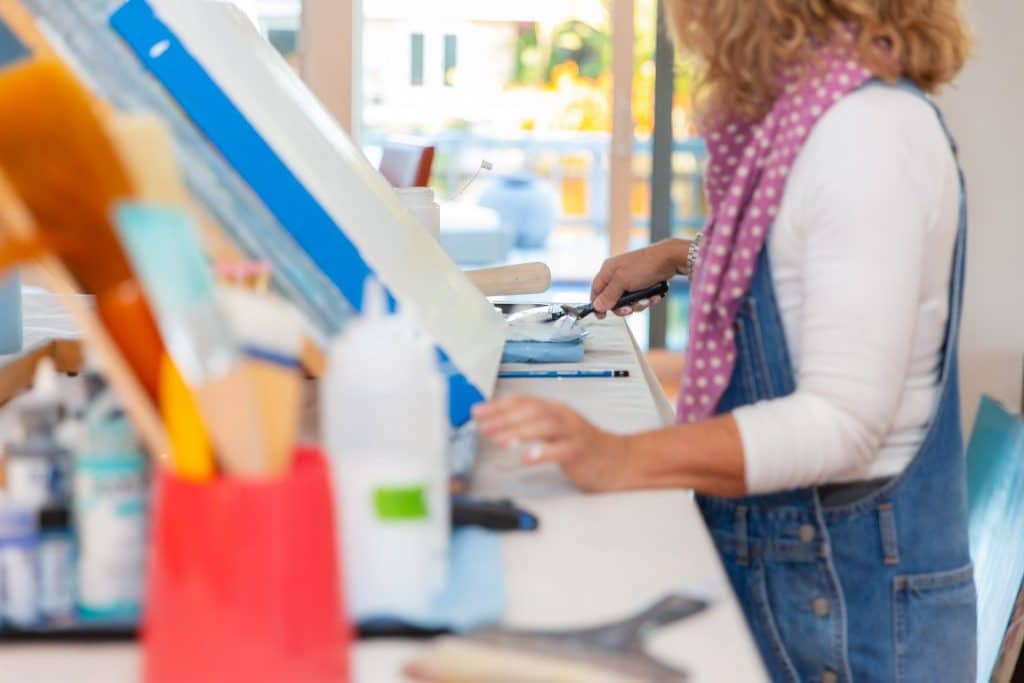
SH: Right, right. And I put down a layer and I look at it. I know that all the layers that go before the final product add to its depth and its personality. It just gives it a deeper meaning, a deeper sense of something, normally peaceful, but it has so much more than just one layer, and it can take me months. I’ve gone back to some things after a year and suddenly finished them just like that, just, you know, final marks, that’s all.
MH: I think that is the plight of a creative, always asking ourselves if something is ever finished.
SH: Well, you can look at things that you thought were finished before and then, oh my God, what?
MH: And then six months later, not so much.
SH: I tend to know when things are finished, some artists don’t know when they’re done. I know when I’m done. I don’t care what anybody else says. I know it’s done. I just know. But I also know when it just needs something else, like anything.
MH: Speaking of something else, let’s go back to the beginning of the process because the beginning of your process is quite something else.
SH: Right.
MH: We were talking about you as a painter and visual artist, yet I know that oftentimes at the start of your process you use words; you are writing on the canvas with language. Can you tell us a little bit more about that aspect of your process?
SH: Yeah, I do. I write my feelings at the time. I get how some people talk about setting intentions for whatever they do, a bit like in yoga. I don’t really purposefully set an intention. But I do write a lot of feelings. They are mostly positive, mostly encouraging words, you know, belief in myself.
MH: So, it’s like you’re encouraging your process at the start.
SH: Yeah, and it gives me something on the canvas to respond to, whether I write them in pencil; whether I write them in graphite; or whether I write them in beautiful charcoal and spray water all over them, so they drip everywhere and make a hideous mess. I usually start like that. It takes away that big white piece of canvas or whatever I’m painting on.
MH: You also mentioned that the majority of your color seems to happen at the start of your process, and that the colors become a bit more muted as you continue towards a sense of completion.
SH: They do. Usually, though not always.
MH: Right. Not always. Point being the two pieces that that we’re using for the artwork for the cover, which is titled Climate Change in Alaska #1 and #2.
SH: Right.
MH: These are very vibrant. They have I, I mean, I remember parts of the process; they really haven’t been tampered down too much. Can you tell us a little bit about how you came to this idea of climate change in Alaska and how that was interpreted in those pieces?
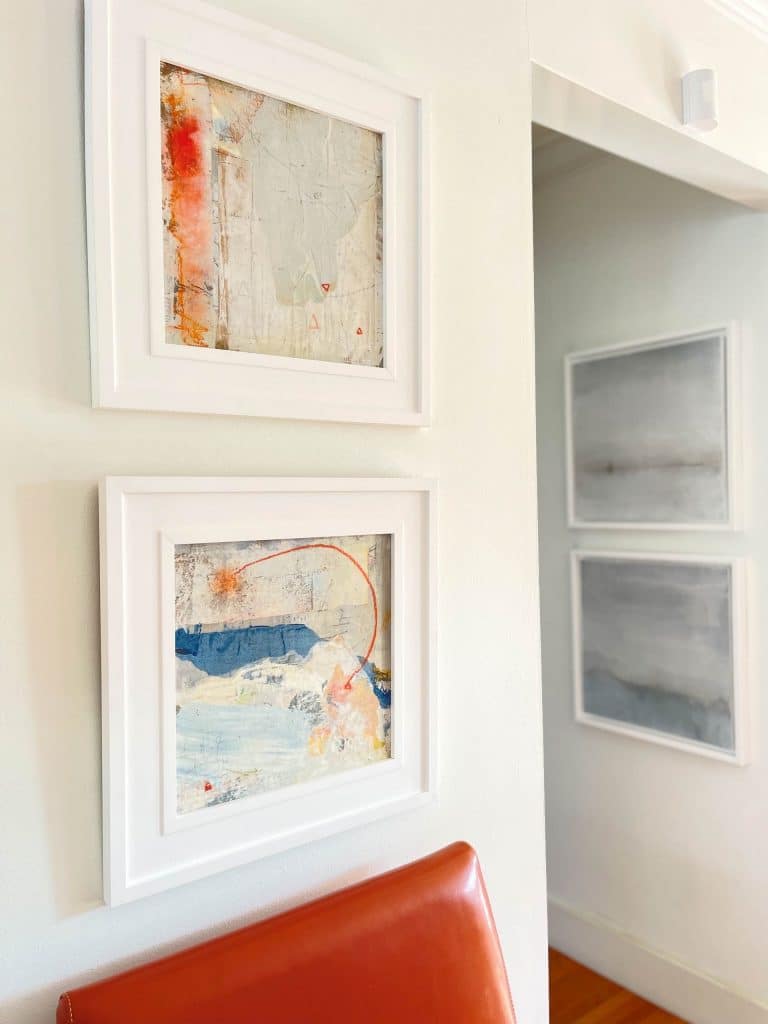
SH: I didn’t set out with the intention that I was going to paint something like that.
MH: Right. As we said, you don’t necessarily begin with an end goal. You begin simply with, “I will follow my process.”
SH: Right. And I started to; I painted the sort of-, most of it is paint and there are a lot of layers on there. And then there’s some collage on there too, some of the collage had drawing on it before. A lot of it I added afterwards.
MH: When you say collage, you’re taking pieces of paper or other material and putting them onto the canvas.
SH: Yeah, whether they’re old paint palettes. I mean, part of that, the one I think it’s number one has, is actually an old paint palette that I used to mix my colors on. And they were so, it looked so good. I thought, “Oh, I can use this.” And so, I like ripped it up and stuck it on there. And I thought something like, “Oh my God, this looks like water. It looks like rocks.” And I drew a bit on it, and all of a sudden it was, I just knew what it was. And Alaska was very, it was at the front of my mind in a lot of ways. I was in the initial stages of planning a trip there, and it’s somewhere I’ve always wanted to go. And I’d just begun looking at things and reading about it and exploring how I approached the trip.
MH: Right.
SH: And so it was, I think, the color and movement. It’s one of those moments when I paint things with color. It’s very rare. My color is in the final, I think it’s one of those moments of bravery where I’m really not afraid because I still happen to think, “Oh, I can’t really do this. I’m not very, you know. I’m not very confident.” So, I tend to mute everything down to make it OK.
MH: So, so why climate change in Alaska? Were you there during, uh…did you experience something that that brought that idea to mind?
SH: I am quite environmentally conscious. I try to be as much as you can, living in America. It really impacts everybody, although people fail to see that. The moving water…I became aware when I went to Alaska and they said, “Oh, we never used to be able to ship, could never go this far up until you know, two years ago.” And you see the impact that everything is having. You know, like that hurricane. You realize that people need to take a bit more care.
MH: So, what connected that experience and that awareness with this art?
SH: What, whether the art came first? The art really came first.
MH: And then when you were in in Alaska, you began to see…?
SH: Step by step. Oh, when I was in Alaska it was fabulous. It was just so; it was so emotional for me. It was so big. It was slow and just so stunningly beautiful. I hate to think of that being destroyed. I hate to think of losing that. It was an incredible experience.
MH: So did you come home from that experience and look at these canvases again and kind of think to yourself, “If I had to come up with a title…?” Or was it perhaps the call for submissions from the magazine?
SH: No, it was before I went to Alaska. So that was basically a year before I went to Alaska. It was just, I don’t know, a gut feeling.
MH: Was almost like a prediction.
SH: And that’s what I’m saying, like art is so you know it was a prediction. It was. It was me willing it to happen. It was a real feeling for me, those colors.
MH: Right, right. Everything, uh, everything just kind of resonated. So, wow, thank you. I’m so glad that we get to see this work and know a little bit about the entire story behind not just the work, but the artist as well.
And so, we started with this question, you know, is art autoethnographic? It’s a kind of tongue in cheek question. Obviously, all creative acts are inherently autoethnographic in that we are drawing from experience. Of course, autoethnography is more purposeful. It’s a purposeful exploration of using one’s lived experience as a source of evidence with which to explore a cultural phenomenon. So, there are many ways, Suzanne, your story reaches into autoethnography from beginning to paint at the start of the pandemic…and so many of us started things in our lives then. That in itself is a beautiful bit of autoethnography, just knowing how this all began and the culture within which you started painting. Your process is fascinating in that your art is not an end product so much as it’s a long journey of various stages.
SH: It’s like life, right?
MH: We get two to three months of Suzanne’s moods and emotions and ideas, and it…
SH: Oh dear.
MH: …evolves and develops.
SH: It really is an emotional thing. It’s totally intuitive. It is a very emotional thing for me.
MH: So, a final question. We can use Autoethnography to explore anything if we’re willing to bring ourselves, to open ourselves up by looking at our own lived experiences and asking questions. Thinking critically, what do you think the benefit might be for painters like yourself to spend a little bit of time reflecting autoethnographically about the connection between their lived experiences and their creative output?
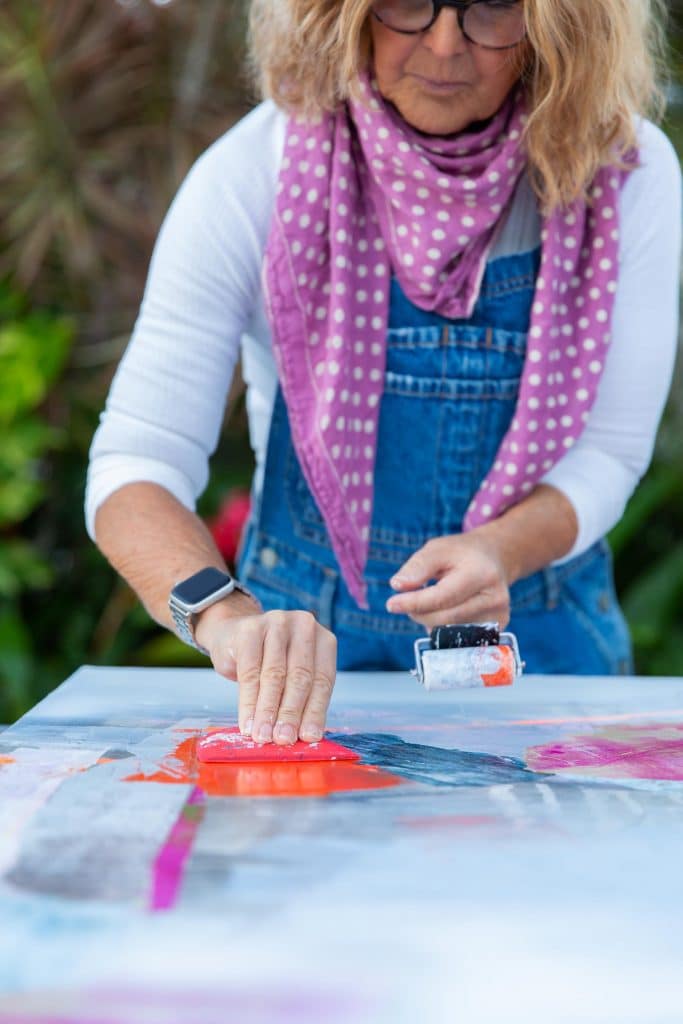
SH: I think it’s huge. Um, for me, I’m a very quiet, introverted person. I don’t often talk about my emotions, my angst, my grief. I tend to process inwardly. Through my art, I can talk about my emotions. Relating it to my art. Ad nauseam. Whereas I could never talk about myself. I just, you know, I don’t really talk about my own feelings. It takes quite a lot for me to do so.
MH: So that process is one of the areas where you are opening yourself up to discussion of yourself in relation to your art.
SH: Yeah, and I found that I can talk about my emotions and what the work means to me, openly, like I don’t care about the judgment. I don’t care what anybody thinks. It’s really changed me as a person. It’s given me a lot more. It’s made me a lot more grounded. A lot more secure with my own feelings and I relate to my art spirit. It starts off as being vibrant. It calms down, becomes very neutral, it becomes calm, and I think it’s a bit like me inside. I’m a beating heart, but I’m British and I tend to shield everything. So, I hide my emotions very well and I feel them in my painting.
MH: So autoethnography then allows you the opportunity to be more reflective and to journey deeper into that process and your emotions and your connection with your work?
SH: It does. It does. It’s a cyclical thing.
MH: Suzanne, thank you so much for helping us ponder how art is autoethnographic. And again, we encourage our listeners to visit you online at suzannehughesart.com. There’s more information about Suzanne on our website. Just Scroll down about half the page, you’ll see we have the special issue on climate change. Included there is our introductory article featuring Suzanne’s artwork.
Suzanne, thank you so much for joining us.
SH: Thank you for having me, I hope I haven’t waffled too much.
MH: I think this was a very enlightening discussion, so thank you again. Have a lovely evening.
SH: You too! Thank you.
Featured images from SuzanneHughesArt
Founder and Editor-in-Chief of The AutoEthnographer, Dr. Marlen Elliot Harrison is an instructor in the fields of English and Education whose autoethnographic writing has appeared in a diverse array of publications including Writing on the Edge,Reflections on English Language Teaching, The Qualitative Report, and Qualitative Research in Psychology. As a journalist, Marlen was the managing editor of the international beauty website, Fragrantica, as well as contributor to publications such as Playboy, Business Insider, The Wall Street Journal, ESL Magazine, The New York Times, Basenotes, The Language Teacher, and Men’s Health. As an academic and cultural researcher, Marlen has enjoyed contributing to projects at Smithsonian’s National Museum of the American Indian, Finland’s University of Jyväskylä, and the Japan Association for Language Teaching. Having taught and guest-lectured at leading institutions such as Doshisha University (Japan), Florida International University (USA), and University of Helsinki (Finland), Marlen is currently pursuing an MFA in Creative Writing from Southern New Hampshire University where he also teaches in the online MA English programs. Having called Japan, UK, Malta, and Finland home, he now lives in Florida with his husband and dog. Learn more at http://marlenharrison.com.


